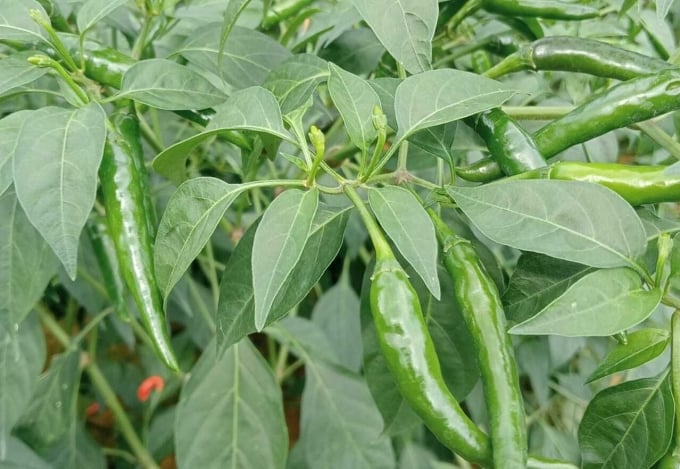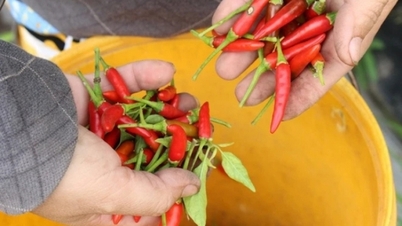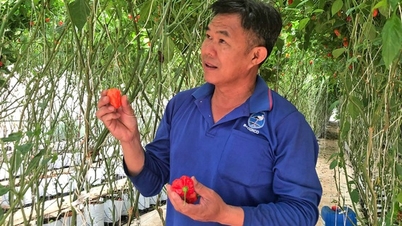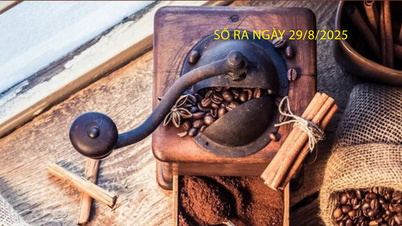Chili peppers in gardens in the Central Highlands and Mekong Delta are being sold at VND25,000-35,000 per kilogram, up 66% compared to the previous month.
Mr. Phan in Gia Lai said he just sold a quintal of chili peppers for 30,000 VND per kilogram, earning 3 million VND. If the price continues to remain at a good level, his family could earn 30 million VND this season.
Similarly, Mr. Thanh - who owns 0.5 hectares of chili in Tien Giang - just sold each kilogram of chili for 32,000 VND. "I just harvested 3 tons of chili and earned 96 million VND. From now until the end of the season, my garden can harvest 2 more tons. If we maintain this price, my family will make a profit of about 100 million VND this year," Mr. Thanh said.
Mr. Vu Tuan, a trader specializing in buying chili in the Western provinces, said that Siamese chili is very expensive because of its characteristic aroma and spicy taste. In addition, this type is in high demand in the market. If China does not buy it, it will be sold to facilities specializing in processing chili sauce and chili powder.
"I am selling wholesale at 35,000-38,000 VND per kilogram. Retail price is 45,000-50,000 VND," said Mr. Tuan.

Staying at a garden house in Dak Lak. Photo: Chili Trading Association
Figures from the Department of Agriculture and Rural Development of An Giang and Tien Giang show that the price of chili sold in gardens and retail markets increased by 50-60% compared to August.
The reason for the sharp increase in chili prices compared to the previous crop is that it is the rainy and stormy season, low output, and high production costs. In addition, the bustling demand in the Chinese and Korean markets has caused demand to be higher than supply, pushing prices up.
With the current stable price, farmers have an income of over 300-350 million VND per hectare per year (excluding costs).
Figures from the Department of Crop Production show that in the Mekong Delta, chili is grown most in the provinces of Dong Thap, An Giang, Tien Giang, Soc Trang, Vinh Long and Tra Vinh with a total area of over 7,000 hectares, producing about 100,000 tons a year. Meanwhile, in the Central Highlands, people have also reduced the growing area to about 4,000-5,000 hectares with a production of about 60,000 tons a year.
Hong Chau
Source link








![[Photo] President Luong Cuong receives Speaker of the New Zealand Parliament Gerry Brownlee](https://vphoto.vietnam.vn/thumb/1200x675/vietnam/resource/IMAGE/2025/8/29/7accfe1f5d85485da58b0a61d35dc10f)






























![[Photo] Hanoi is ready to serve the occasion of the 80th National Day Celebration on September 2nd](https://vphoto.vietnam.vn/thumb/1200x675/vietnam/resource/IMAGE/2025/8/29/c838ac82931a4ab9ba58119b5e2c5ffe)































































Comment (0)